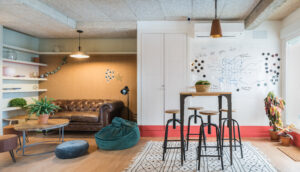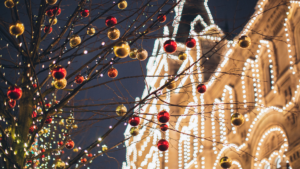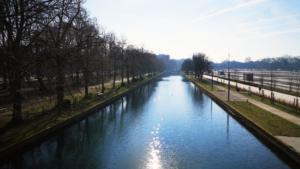Discover the Best Christmas Markets in Madrid
Christmas in Madrid is truly something spectacular 🎅🎄🎁
Madrid’s holiday season dazzles with lights, festive activities, and enchanting Christmas markets. Whether you’re shopping, indulging in seasonal sweets, or immersing in local traditions, Madrid offers a holiday experience like no other.
Let’s explore the best Christmas markets in Madrid, plus other places in the city where you can soak up the Christmas spirit!
Classic Madrid Christmas Markets

Plaza Mayor Market
The iconic Plaza Mayor market typically runs from November 29 to December 31. It is a staple of Madrid’s Christmas celebrations. This is a great place to buy lights and decorations, toys and festive knick-knacks.
Feria Mercado de Artesanía de Madrid
Located at Paseo de Recoletos, this artisan market features over 180 craftsmen showcasing unique gifts ranging from jewelry to ceramics. It’s the perfect place to look for a special gift or meaningful piece of art.
Plaza España Market
Located in the expansive Plaza España, this market is part of the broader festive activities in the area. The market includes an ice skating rink and spectacular light displays. It’s ideal for those looking to enjoy traditional holiday foods while shopping for handmade products amidst a vibrant display of Christmas lights and decorations.
El Corte Inglés Market and Cortylandia
Set in the parking lot of El Corte Inglés in Castellana, this market is perfect for enjoying festive decorations and trying gourmet foods. Adjacent to the market, “Cortylandia” features animated figures that sing and dance just outside of El Corte Inglés. This quick show has become a cherished staple in many families’ holiday traditions, especially great for young children.
Spanish Christmas Traditions

Nativity Scenes (Belénes)
Nativity scenes, or ‘Belénes’, are a central part of Christmas in Spain. These elaborate displays depict the story of Jesus’ birth and are found in churches, homes, and public squares across Madrid. You can even buy them at some of Madrid’s Christmas markets.
Christmas Lottery (El Gordo)
The Spanish Christmas Lottery, known as ‘El Gordo‘ (the Fat One), is the biggest lottery draw of the year, taking place on December 22. It’s a major event that brings communities together in hopes of winning. A cherished part of the lottery involves children from San Ildefonso school singing the winning numbers live on TV.
The Feast of the Immaculate Conception
This religious holiday on December 8 marks the beginning of the Christmas season in Spain. It is celebrated with public ceremonies and church services throughout Madrid.
Christmas Eve (Nochebuena)
Christmas Eve in Spain is a time for family gatherings. People come together to enjoy a big meal and then head to midnight mass, known as ‘La Misa Del Gallo’.
Three Kings Day (Día de los Reyes)
Celebrated on January 6, this day is even more significant than Christmas Day in Spain. Children receive gifts from the ‘Three Wise Men’, reflecting the gifts they gave to the infant Jesus.
On this day, families also share the ‘Roscon de Reyes‘, a special ring-shaped cake that is both a treat and a game. The cake typically contains a small figurine and a bean. Whoever finds the figurine is said to receive good luck for the year, while the person who finds the bean must pay for the cake. This tradition adds an element of fun and excitement to the holiday festivities, as everyone hopes to find the figurine in their slice of cake.
New Year’s Traditions
On New Year’s Eve, Spaniards eat twelve grapes at each stroke of midnight for good luck in the coming twelve months. This tradition is best experienced in Madrid’s Puerta del Sol, where thousands of people gather to welcome the new year.
São Silvestre de Vallecas Race
The São Silvestre de Vallecas is a popular road race that takes place annually on December 31st in the Vallecas neighborhood of Madrid. This event is part of a wider tradition of “San Silvestre” races held across Spain and various parts of the world on New Year’s Eve. These races are festive, often featuring participants in costume, and serve as a lively way to close out the year.
In Vallecas, the event includes two versions: a fun run open to the general public and a more competitive race that attracts serious runners, including elite athletes. The fun run is especially known for its festive atmosphere, with many runners dressed in whimsical costumes, bringing a celebratory and communal spirit to the proceedings. The competitive race, on the other hand, draws local and international athletes looking to end their year with a strong performance, making it a significant event in the sporting calendar.
Additional Holiday Attractions

Cultural Performances
Catch holiday-themed performances at cultural hubs like Conde Duque and CentroCentro. From puppet shows to concerts, Madrid’s cultural institutions offer festive entertainment suitable for all ages.
Ice Skating
Embrace the winter chill by visiting the ice-skating rinks at Plaza Oriente and Santa Cruz, a perfect way to enjoy Madrid’s festive atmosphere.
Naviluz Christmas Bus Tour
Experience Madrid’s Christmas lights in warmth and comfort on the Naviluz bus tour, a favorite holiday tradition that showcases the city’s spectacular festive decorations.
Photo Credits:
- All photos used through the Canva Free Media License

























































